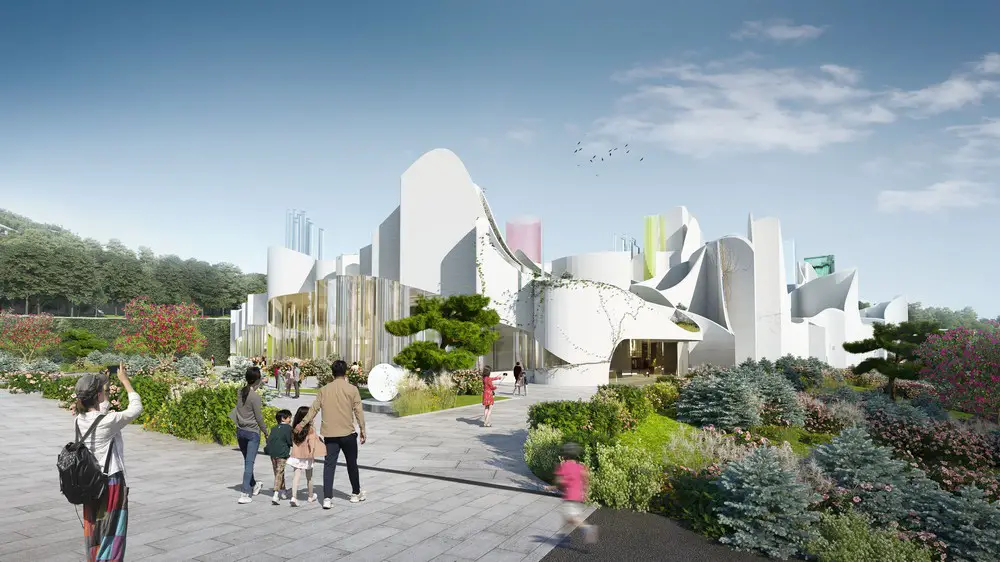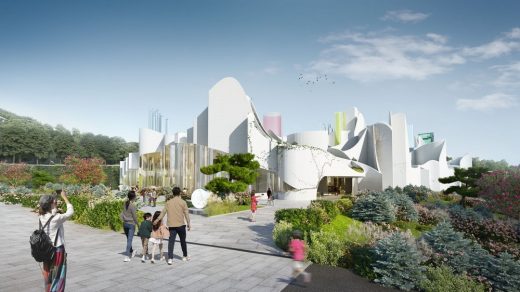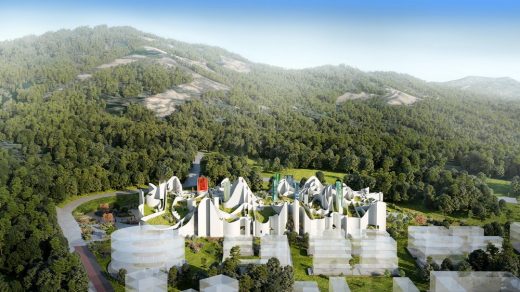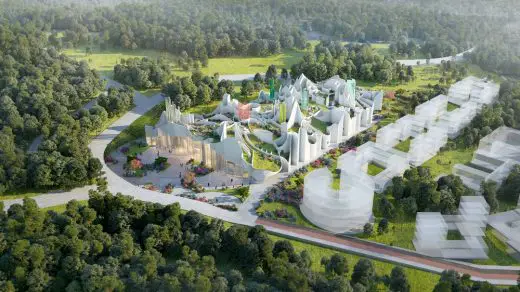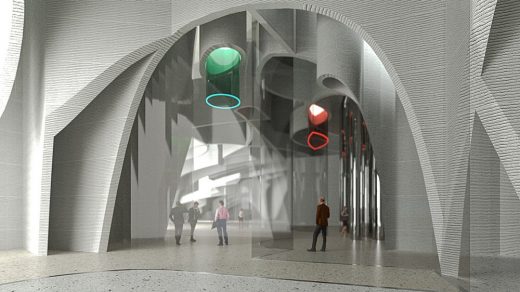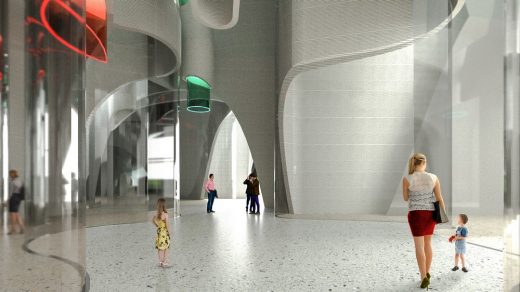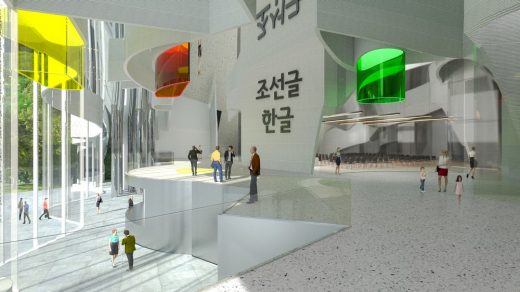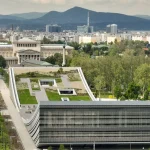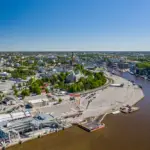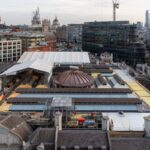National Museum of Korean Literature, Seoul, South Korea Concept Building, Architecture Competition Entry, Images
National Museum of Korean Literature in Seoul
13 Jul, 2021
Design: Architects of Invention
Location: Seoul, South Korea
National Museum of Korean Literature
The story is printed by us
Just as ink revolutionised the written word, the printing press revolutionised book publication– 3D printing revolutionises architecture, how we build, with a view to innovation and sustainability. Cheaper, quicker, easier— sustainable. The importance of literary culture is promoted by bringing future technology and innovation – narrative and form combine, printed in an architectural gesture.
National Museum of Korean Literature Design
Hand drawing manifestation
In re-establishing the primacy of hand-drawing and its original possibilities in the making of buildings, the 3D printing approach is more sensual than it first seems. A return to the rudimentary skills of a drawing using the printing tool makes art of buildings. The manifestation of a hand-drawing, printed to form a building opens amazing possibilities in the expression of cultural and expansive gestures within the built environment.
The rational vs the irrational in architecture
The comparison of a free-hand movement with controlled structural patterns highlights the contrast between 3D printed and traditional construction technology. Traditional concrete technology follows established methods, bound to the supply chain production rationalisation of manufacturing, which insisted upon technology based on the formwork dimension governed grid.
3D technology eliminates this notion of the grid-based rationalisation systems by using ‘singular’ material and its bottom-to-top layering method. No more factory-based rationalised supply chain systems. Post-rationalisation collides with a rationalisation of the meaningless combination of elements confined to a sequence forming a conglomerate of an organism, while the organism is a singular motion, technique, material and a free form. No more container stacked rectangles.
Shape does not matter, if the rational resonates with the desired outcome. The expression of thoughts, unconstrained by technology leads to a liberation of thought itself. Just as ink made it possible to record and translate thought, not only in the form of words as symbols, but also in the generation of stories. A story can be anything, a narrative, a multi-layered, polyphonic, flowing whole—why should architecture be constrained by building blocks, unable to fully express itself, always relying on a heavy industrial supply chain?
Singularity
The singularity I’m referring to points to essential and ultimate ways of living. It is the creating of singular solutions for multiple functions, forms and purposes. It is difficult to reconcile architecture’s singularity with the awareness of its multiple conditions and consequences.
There is a fragile boarder between the Post-humanistic scientific approach and more traditional humanism with the emphasis on the singular. Parametricism denies human input except for a methodologic matrix control. All parameters are pre-set in the given conditions of the place (sun, wind, climate, market conditions, programme) so human input is a monitoring stance, making choices in a random order, mostly based on the intuition.
Singularity focuses on architecture as a singular object – aesthetic, formal, self-contained and irreducible to the conditions from which it emerges or the effects it stimulates. Architecture is an isolation from determining multiplicities or programme, creating homogeneous unity in a homogenous space. Functions can no longer be differentiated but they are alienated into ephemeral hybridisation.
The Challenge in the Principle is this: the post-humanistic (that is, robots) versus the human (that is, the individual/singular). Architecture can no longer be critical, because it depends on pre-determined, automatic choices of the parametric input matrix, which we, as a society, made possible by accepting the notion of progress via google, uber, amazon and grasshopper.
Lead Architect: Ryuichi Sasaki/Architects of Invention
National Museum of Korean Literature, Seoul, South Korea images / information received 130721 from Architects of Invention
Location: Seoul, South Korea, East Asia
South Korea Architecture Designs
Contemporary South Korean Architectural Selection
South Korean Architecture Designs – chronological list
Design: OMA
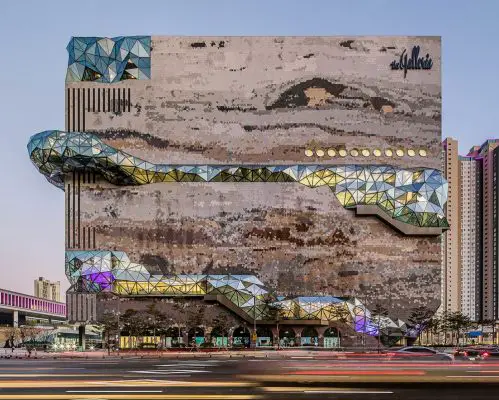
Photography by Hong Sung Jun, courtesy of OMA
Galleria Department Store in Gwanggyo
Design: Foster + Partners, UK
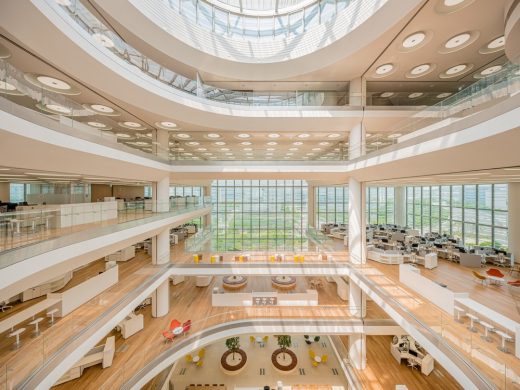
photo : TIME OF BLUE
Hankook Technoplex in Pangyo
Design: ATELIER BRÜCKNER
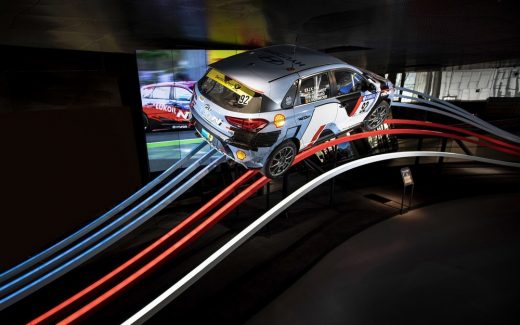
image courtesy of architects office
Hyundai Motorstudio in Goyang Korea
Architects: ATELIER BRÜCKNER
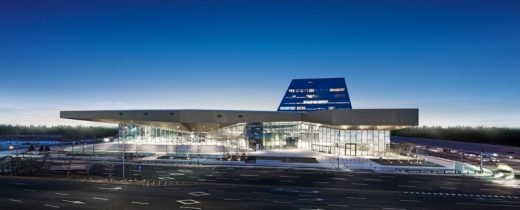
image from architecture office
Hyundai Motorstudio in Goyang
South Korean Architecture News
Comments / photos for the National Museum of Korean Literature, Seoul design by Architects of Invention page welcome

